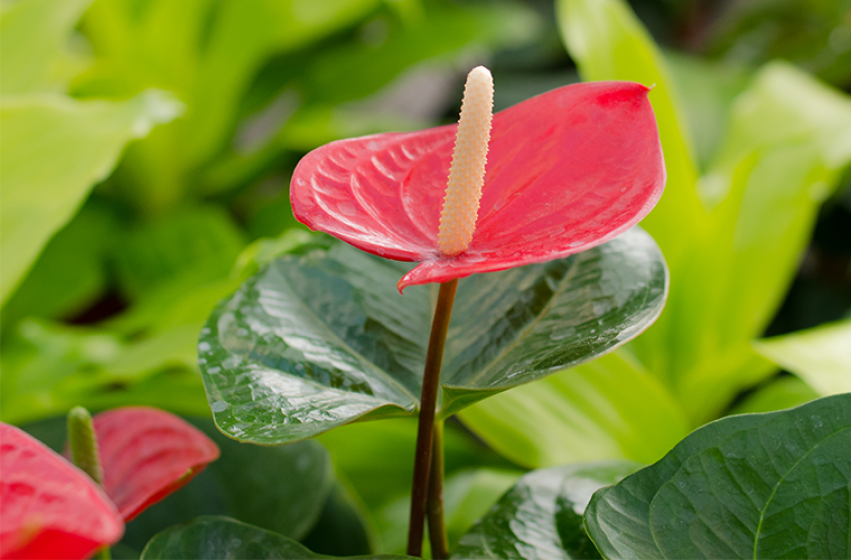Pothos, philodendrons, anthuriums, peace lilies, and zz plants are all members of the Araceae family (aka the Arum family), also known as “aroids.” No other group of plants can compare to the extravagant and exotic foliage exhibited by Araceae. Aroids have become a staple in the houseplant market for the relative ease of care and their ability to tolerate both bright and low light conditions. Here’s what you’ll need to know about these special plants and how to care for them.
AROID CHARACTERISTICS
Aroids are prized for their diverse, spectacular foliage (monsteras especially) and relative ease of care. They’re well-adapted for life indoors and grow fairly quickly. Aroids have several distinguishing features. The easiest way to identify these plants is by observing the flower. Arum flowers have a spathe, a petal-like structure, which can attract pollinators, and a spadix, which is a spike containing the flowers or Inflorescence. Leaf blades come in all sizes, shapes, and colors. These plants are extremely diverse thanks to their ability to tolerate both low and bright light conditions as well their ability to thrive indoors (or out) with little to no soil. Many of these plants have waxy roots and leaves that block the plants from absorbing too much water, making it possible for them to progagate in water.
AROID CARE
Care varies between species, but here are a few general tips for caring for aroids.
LIGHTING
Most aroids prefer bright, indirect sunlight (near a sunny window but not right in the sun’s rays), while other varieties can handle low light conditions.
WATERING
Most aroids like a moderate amount of water. Let the top one-to-two inches of soil dry out before watering again. Leaves will droop, wilt, yellow, or get crispy when thirsty and can develop dark brown, mushy spots when overwatered. Aroids originate from tropical climates and prefer higher humidity, so misting the leaves and/or using humidity trays will help. Use a good, well-draining soil mix and plant in a pot with drainage holes.
TIP #1: Let water sit for at least 24 hours before watering plants. This will allow the chlorine and fluoride normally found in municipal water to dissipate. Misting water should also be dechlorinate prior to misting plants.
FERTILIZING.
Fertilize in the spring or summer when the days start getting longer. Be sure to watch the video "Amazing Aroids" with Garden Guru, Mike Westphal.

